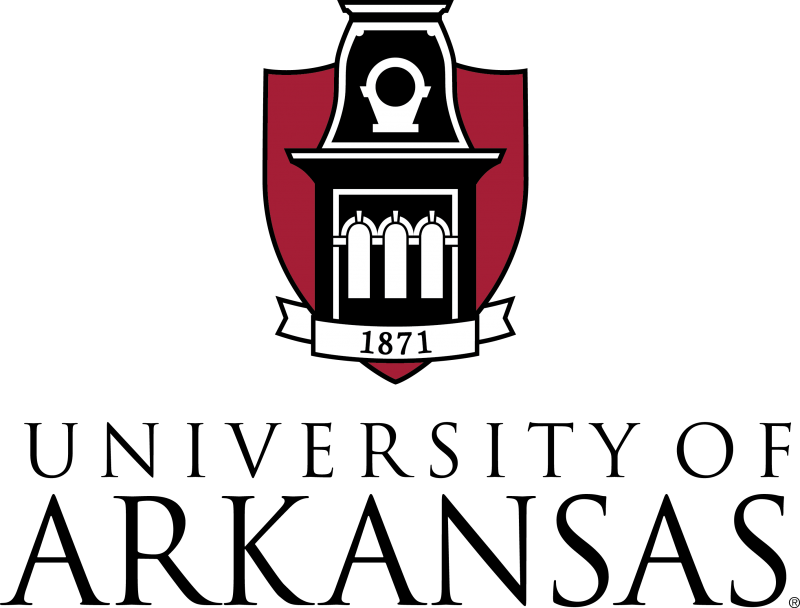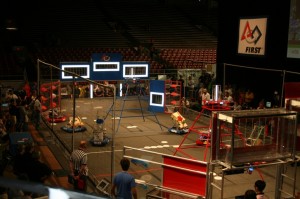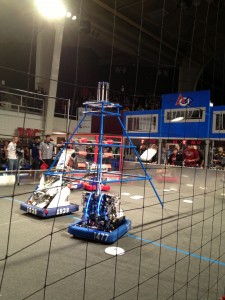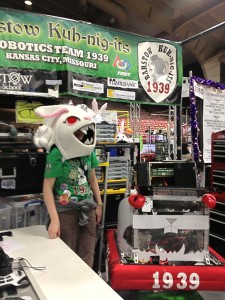By Alie Davila
With only seconds left until game time at the Razorback Regional FIRST Robotics Competition , the Barstow Kuh-nig-its repaired a jammed shooter, which enabled their robot to play an extreme game of frisbee.
“We ended up fixing that (the shooter) with 3 seconds left in the match before us and ended up winning that match, which was crazy because the other three teams we were playing were extremely good,” said Izzy Lloyd, Barstow High School junior.
The Kuh-nig-its, along with their “Killer Rabbot” inspired by Monty Python and the Holy Grail, were one of 42 teams to fill Barnhill Arena for the Razorback Regional FIRST (For Inspiration and Recognition of Science and Technology) Robotics Competition, which was hosted by the University of Arkansas College of Engineering
For students, these robotics competitions are about as close as it gets to “real-world engineering,” according to FIRST. In just six weeks, teams design and build 150 pound robots to play about a two minute game of “Ultimate Ascent,” in which robots toss discs into different goals and climb pyramids to earn points.
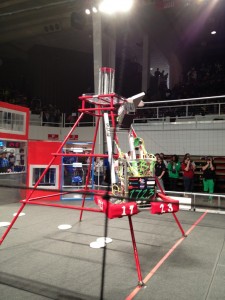
Some of the robots had special equipment, enabling them to climb all the way to the top of the metal structures on the field
The competition kicked off with two days of qualifying rounds and ended with a day of elimination rounds, followed by an awards ceremony. The Springdale High School GearHogs were one of eight alliances that made it to the elimination rounds, although they ran into some problems getting there–literally.
“Our robot got rammed into at the begging of a match, so it took awhile to regain control, but we recovered pretty well and only missed out on about 10-15 seconds of the match,” said Stephanie Sandoval, Springdale High School junior.
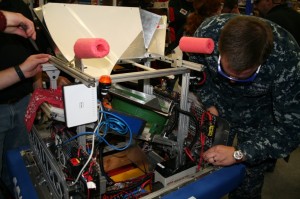
The GearHogs repairing their robot, David. The robot was named in honor of Scott Winfrey’s, head mentor for the GearHogs, dad who is battling cancer.
Sandoval said the GearHogs, who at one point held the high score in the competition, have drastically improved since their rookie year in 2011 and even since their last competition in March. The GearHogs, whose mentors include two U of A engineering professors, were one of six teams to clinch a spot to the FRC World Championship that will take place in St. Louis later this month.
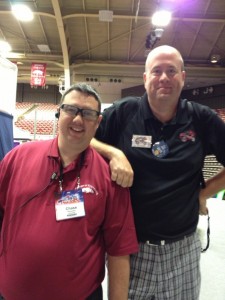
Chase Rainwater and Richard Cassady, University of Arkansas engineers professors and GearHogs team mentors.
Bryan Hill, an assistant dean at the College of Engineering and one of the organizers of the event, explained that both the university and the students benefit from the competition. “We’re bringing potential engineers here to see our campus,” Hill said. “They are the best and brightest math and science students in the region, and this experience has prepared them well for engineering programs.”
